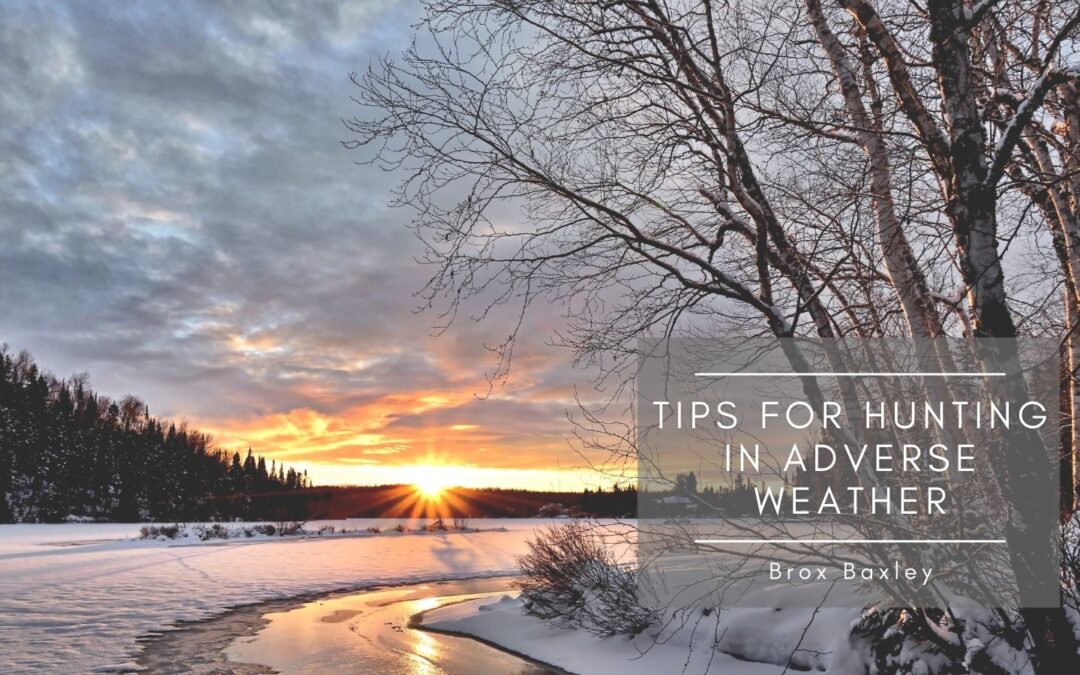Hunting, a primal skill rooted deeply in our ancestry, often evokes images of clear, crisp mornings and serene wilderness scenes. Yet, Mother Nature isn’t always so accommodating. There are moments when the skies darken, the wind howls, or snow blankets the ground. Adverse weather conditions present unique challenges for hunters but can also offer unparalleled rewards.
For millennia, our ancestors relied on hunting as a primary sustenance. They did not have the luxury of choosing only clear days but had to brave storms, sleet, and sweltering heat to ensure survival. These ancient hunters mastered the art of utilizing the weather, reading the signs it offered, and adapting their strategies accordingly. The elements were not merely hurdles to overcome but tools to be harnessed. With the evolution of hunting equipment and technology, modern-day hunters have more resources to handle inclement weather than ever. But the principles remain rooted in understanding, adaptability, and preparation.
Importance of Proper Gear
The right gear is the cornerstone of any successful hunt, especially in challenging weather. Firstly, invest in quality weatherproof clothing. Waterproof and breathable fabric is crucial, ensuring you stay dry without sweat. Layering is critical; it allows for adjusting according to changing conditions. A base layer wicks away moisture, an insulating layer retains body heat, and an outer layer repels external humidity.
Footwear should be durable, waterproof, and provide good traction. Adverse weather can turn terrains slippery and treacherous, making reliable boots indispensable. Gloves should balance warmth with dexterity, ensuring fingers remain nimble for tasks like aiming or tracking.
Lastly, protect your equipment. Use waterproof cases for electronic devices, like GPS units, and safeguard firearms or bows from moisture and debris. Regular maintenance post-hunt, especially in wet conditions, prevents long-term damage.
Adapting Tactics
Weather impacts animal behavior, and understanding this can offer strategic advantages. Rain, for instance, dampens human scent and noise, making it easier to approach the game. However, it also makes tracking harder as trails get washed away. Hunters should focus on areas where animals seek shelter, like thickets or under large trees.
Snow, on the other hand, offers excellent visibility for tracking. Animals move less during snowfalls but become active afterward, seeking food. Focusing on food sources can yield results.
Wind direction determines how animals move and where they lie. Always approach the game from downwind to ensure your scent doesn’t reach them. Wind also carries noise, so position yourself accordingly.
Prioritizing Safety
- Safety is paramount, especially in unpredictable weather. Always inform someone about your hunting location and expected return time. Carry communication devices and spare batteries.
- Avoid hypothermia by staying dry. Wet clothing saps body heat rapidly, so it changes immediately if drenched. Recognize signs of frostbite – numbness, tingling, or discolored skin – and seek warmth.
- In thunderstorms, avoid open fields and ridges. Never take shelter under isolated trees; stay low if there’s no shelter.
- If lost, stay calm. Panic can exacerbate situations. Carry a whistle. Its sound travels further than the human voice and conserves energy.
- Lastly, always carry a first-aid kit tailored for hunting trips, addressing potential injuries and weather-specific issues.
Adverse weather hunting is about braving the elements and embracing them. It challenges a hunter’s skill, tests their resolve, and often provides a more intimate connection with nature. With the right gear, adaptive tactics, and a safety-first approach, a hunter can transform seemingly unfavorable conditions into a rewarding experience.

